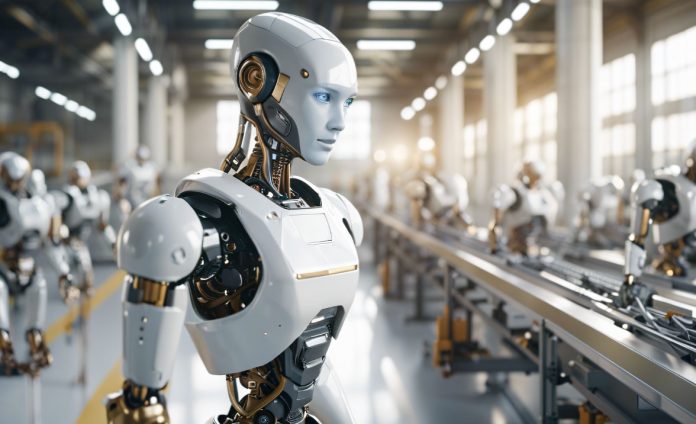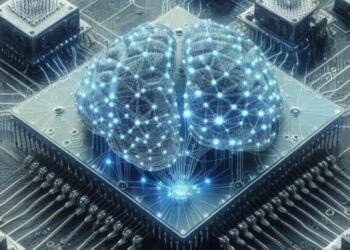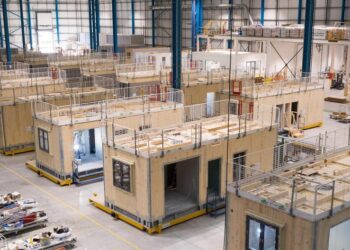For generations, the idea of a personal humanoid robot has been a cornerstone of our science fiction dreams. From Rosie the Robot in “The Jetsons” to the benevolent androids of Isaac Asimov’s novels, we have fantasized about a future where intelligent, bipedal machines would free us from the drudgery of daily chores and act as our loyal companions. For decades, this vision remained firmly in the realm of fantasy, a technological mirage always shimmering on a distant horizon. That horizon is now rapidly approaching.
We are standing at the threshold of a revolution that will fundamentally redefine the concept of “home.” Driven by a powerful convergence of artificial intelligence, advanced robotics, and plummeting component costs, the humanoid helper is transitioning from a lab prototype into a viable future product. This is not merely about creating a novelty gadget; it is about addressing some of the most profound societal needs of our time, from elder care to the very nature of domestic life. The question is no longer if we will have humanoid robots in our homes, but when they will arrive and how we will prepare for the immense changes they will bring.
This article explores the seismic shift underway. We will dissect the technological breakthroughs making this possible, introduce the key corporate players racing to build the first true domestic android, envision the specific roles these machines will play in our daily lives, and confront the monumental societal, economic, and ethical challenges that lie on the path to our front door.
The Perfect Storm: Why This Revolution is Happening Now
The sudden acceleration in humanoid robotics is not the result of a single breakthrough, but rather a perfect storm of converging technologies that have simultaneously reached a critical stage of maturity. Each element acts as a force multiplier for the others, creating an exponential surge in capability.
A. The Brains of the Operation: Advanced AI and Learning Models The single greatest enabler is the explosive progress in artificial intelligence. Early robots could only perform rigidly pre-programmed tasks. Today’s emerging humanoids are powered by sophisticated AI that allows for adaptation and learning.
- Large Language Models (LLMs): The same technology behind chatbots like ChatGPT allows these robots to understand and respond to complex, nuanced verbal commands. You won’t need a programming manual; you’ll simply be able to say, “Please tidy up the living room, but leave the books on the coffee table.”
- Large Behavior Models (LBMs) and Imitation Learning: This is the game-changer for physical tasks. By watching countless hours of video of humans performing chores, or by being guided through a task once, these robots can learn to generalize actions. They can learn what “folding laundry” entails and apply that knowledge to different types of clothing. This “watch and learn” capability is what separates a true helper from a simple automaton.
B. Seeing and Feeling the World: Advanced Sensors and Perception A robot cannot operate safely or effectively in a dynamic human environment if it is blind and numb. The modern humanoid is equipped with a sensor suite that rivals human senses, allowing it to build a rich, real-time understanding of its surroundings.
- Vision Systems: High-definition, 3D cameras allow the robot to identify objects, recognize faces, read text, and gauge depth with incredible precision.
- LiDAR (Light Detection and Ranging): By bouncing laser beams off surfaces, LiDAR creates a constantly updating 3D map of a room, allowing the robot to navigate around furniture, pets, and people without collisions.
- Force-Torque and Tactile Sensors: These are critical for manipulation. They are embedded in the robot’s joints and fingertips, allowing it to “feel” how much force it is applying. This is the difference between crushing a paper cup and gripping it firmly, or knowing how to handle an egg versus a cast-iron skillet.
C. Graceful Movement: Actuator and Battery Technology The clumsy, lumbering robots of the past, often tethered by thick power cables and powered by noisy hydraulics, are gone. The new generation is designed for the home.
- Electric Actuators: Sophisticated electric motors and gearing systems now allow for movement that is fluid, silent, and precise. This enables the complex balance required for bipedal walking and the fine motor skills needed for delicate tasks.
- Battery Density: Just as with electric vehicles and smartphones, battery technology has improved dramatically. Higher energy density means a robot can operate for many hours on a single charge, making it a genuinely useful, untethered member of the household.
D. The Economics of Scale For decades, a walking humanoid robot was a multi-million dollar research project. Today, the very components that make them possible—powerful processors, high-resolution cameras, LiDAR sensors—are mass-produced for the automotive and consumer electronics industries. This has caused their costs to plummet, making the dream of an affordable humanoid robot, perhaps priced like a small car, an economic possibility for the first time in history.
The New Titans: The Race to Build Your Future Butler
A new global race is underway, with tech giants and audacious startups vying to be the first to place a humanoid robot in the consumer market. These are not just science projects; they are well-funded corporate initiatives with serious commercial goals.
- Tesla and Optimus: Leveraging its immense expertise in AI, battery technology, and mass manufacturing from its electric vehicle business, Tesla is perhaps the most formidable player. Elon Musk’s vision for Optimus is not just to perform tasks in Tesla factories, but to eventually produce millions of units that can be deployed in any environment to handle tasks that are “boring, repetitive, or dangerous.” The focus is on real-world intelligence and scalability.
- Figure AI: This dynamic startup made headlines by partnering with OpenAI, giving its robots access to cutting-edge visual and language understanding. Their demonstrations of the Figure 01 robot learning to make coffee after simply watching a human do it showcases the power of modern AI. With backing from giants like Microsoft and Amazon, and a recent partnership with BMW for factory work, Figure is a serious contender.
- Boston Dynamics: The company that has amazed the world for years with viral videos of its Atlas robot doing parkour and dancing is now channeling that pioneering research into commercial applications. While their current products, Spot (the dog-like robot) and Stretch (a logistics robot), are for industrial use, the decades of research into dynamic balance and mobility in Atlas form the technological foundation for a future humanoid product.
- Agility Robotics and Digit: Agility’s bipedal robot, Digit, is already being trialed in Amazon warehouses. The key insight is that a robot built to navigate a space designed for humans (like a warehouse aisle) can easily translate its abilities to another space designed for humans: the home.
- Global Contenders: The race is not limited to the US. Chinese companies like Fourier Intelligence (with its GR-1 robot) and Unitree Robotics are rapidly developing their own highly capable humanoids, signaling that this will be a fiercely competitive global market.
A Day in the Life: The Practical Roles of a Home Humanoid
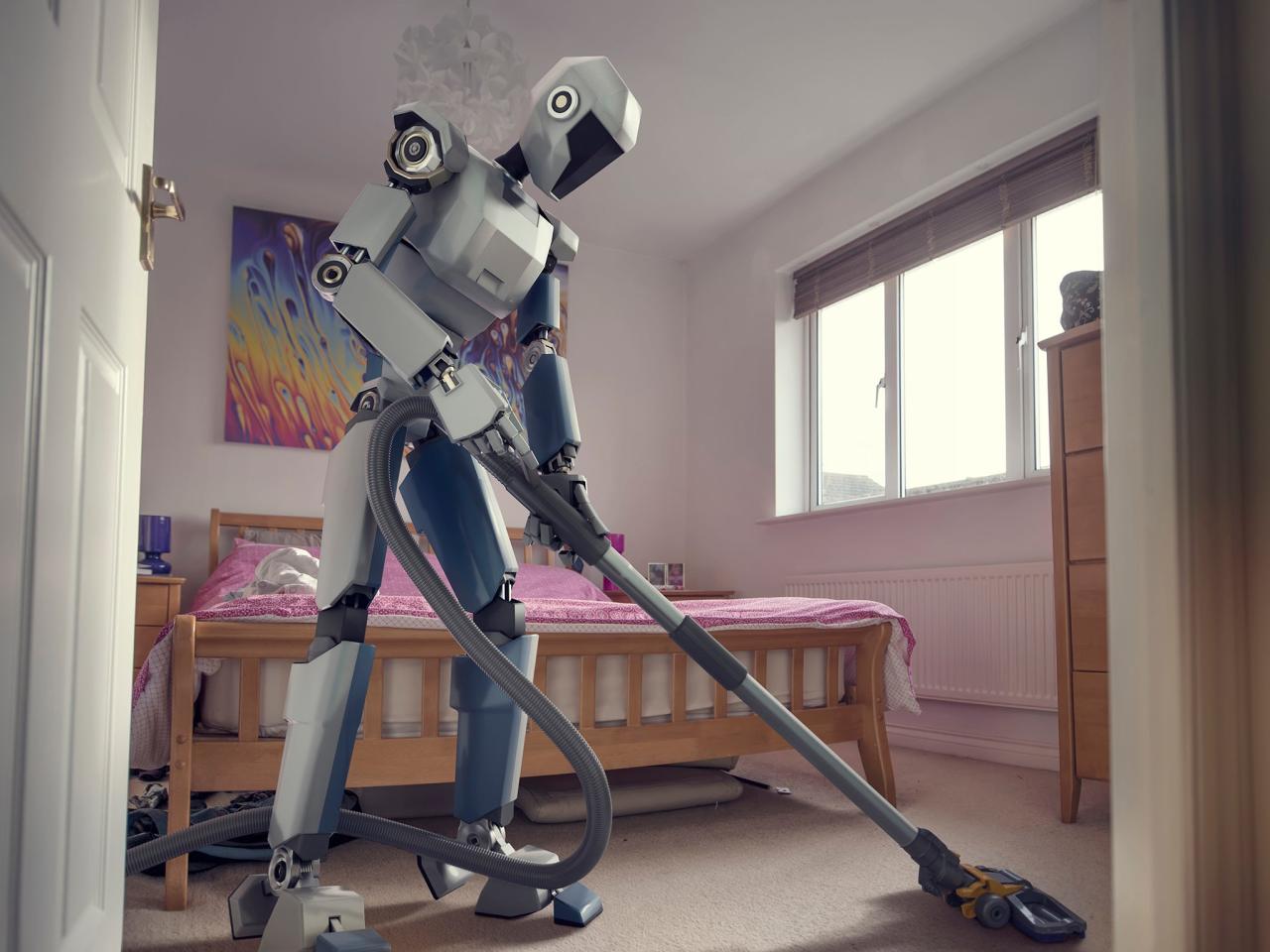
What will one of these robots actually do? Their purpose is to take over the physical tasks that consume our time and energy, and to provide assistance where it is most needed.
A. The Master of Domestic Chores This is the most obvious application. A humanoid helper could automate the endless cycle of household chores, freeing up hours of human time each week. This includes:
- Laundry: Sorting clothes, loading and unloading the washing machine, and, in the ultimate demonstration of dexterity, folding and putting them away.
- Kitchen Duty: Loading and unloading the dishwasher, setting and clearing the table, wiping down counters, and even performing basic food preparation like chopping vegetables.
- General Tidying: Picking up toys, straightening cushions, organizing shelves, and essentially maintaining a constant state of order.
B. The Empathetic Caregiver and Companion Perhaps the most societally impactful role for humanoid helpers will be in elder care and assistance for individuals with mobility challenges. As populations in many countries age, a looming caregiver crisis makes this technology not just a convenience, but a necessity. A robot could:
- Provide Mobility Support: Offer a stable arm to help a person stand up from a chair or get out of bed.
- Fetch and Carry: Retrieve medication, a glass of water, or the television remote, reducing the risk of falls for those with limited mobility.
- Monitor and Alert: Serve as a communication link, allowing family members to check in via video call, and automatically alert emergency services if it detects a fall or a cry for help.
- Combat Loneliness: Act as a source of companionship, engaging in conversation, playing games, and providing a feeling of presence and security.
C. The Guardian and All-Purpose Assistant The robot’s role can extend beyond simple chores and care. It can become an integrated part of the home’s functioning.
- Security: Patrol the home at night, investigate unusual noises, and provide a mobile camera feed to the homeowner when they are away.
- Logistics: Greet delivery drivers at the door, accept packages, and bring in groceries.
- DIY Projects: Act as a “third hand” by holding a ladder steady, passing tools, or holding a board in place.
The Ripple Effect: How Humanoids Will Transform Society
The introduction of a technology this powerful will inevitably create profound ripples across our social and economic landscapes.
- The Future of Work and the “Care Economy”: The automation of domestic labor will disrupt industries like cleaning services and caregiving. However, it will also create a massive new industry dedicated to designing, manufacturing, maintaining, and training these robots. Most importantly, it offers a powerful solution to the critical shortage of human caregivers, allowing human workers to focus on the more complex, emotional aspects of care while the robot handles the physical strain.
- The Gift of Time: What will we do with the hours freed from mundane labor? The widespread adoption of humanoid helpers could lead to a renaissance in creativity, family time, lifelong learning, and leisure, fundamentally altering our relationship with work and home life.
- Economic Scale: The potential market for personal humanoid robots is staggering, with some analysts predicting it could eventually rival or even exceed the automotive industry. This represents one of the largest economic opportunities of the 21st century.
The Final Hurdles: Challenges on the Path to Your Doorstep
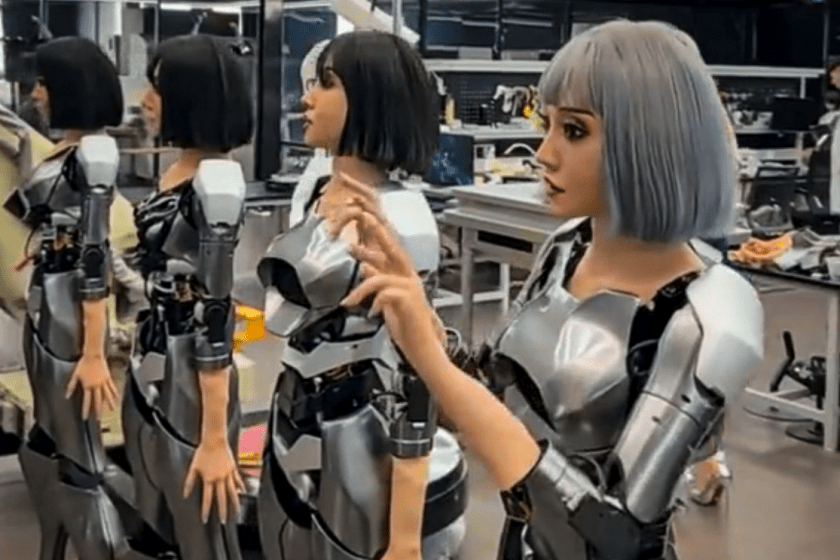
Despite the rapid progress, significant challenges remain before a humanoid robot becomes a standard home appliance.
A. The Dexterity Problem (The “Last Inch”) The most difficult technical challenge is mastering delicate manipulation. A robot needs the dexterity to handle a wide range of objects with different shapes, weights, and fragility. Programming a robot to successfully fold a soft, deformable towel is, in many ways, a far greater challenge than teaching it to lift a heavy box.
B. Uncompromising Safety and Reliability A 150-pound, free-roaming machine in a home with children and pets must be flawlessly safe. This requires multiple layers of redundancy, sophisticated ethical programming to handle unexpected situations (the modern equivalent of Asimov’s Laws of Robotics), and exhaustive testing to ensure it can never, under any circumstances, cause harm.
C. The Social and Ethical Quagmire The technical challenges may pale in comparison to the ethical ones.
- Privacy: A humanoid robot is a walking, talking sensor package with cameras and microphones. How do we ensure the data it collects is secure and private?
- Emotional Attachment: Is it healthy for humans, particularly children or the lonely elderly, to form deep emotional bonds with a machine?
- Misuse and Security: How do we prevent these powerful machines from being hacked or used for malicious purposes?
D. The Final Barrier: Cost While costs are falling, the first wave of domestic humanoids will likely be expensive luxury items. The ultimate challenge will be to drive the cost down through mass production and innovation to a point where they are accessible to the average family, perhaps through leasing or “Robot-as-a-Service” models.
Preparing for the New Inhabitants
The arrival of the humanoid helper is no longer a matter of ‘if’. The convergence of technology, investment, and societal need has made it an inevitability. These machines offer a future where our elderly can age with dignity and independence in their own homes, where our time is liberated from routine labor, and where human potential is freed to focus on creativity, connection, and compassion.
The journey from the lab to our living rooms will be complex, filled with immense technical hurdles and profound ethical debates. As a society, we must engage in these conversations now, shaping the regulations, safety standards, and ethical frameworks that will govern this new technology. We are not just inventing a new appliance; we are preparing to welcome a new, intelligent inhabitant into our homes, and our lives will never be the same.
